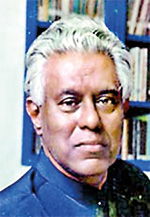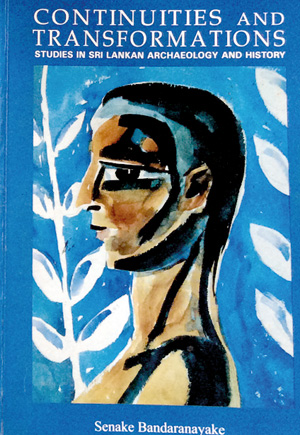Sunday Times 2
Senake Bandaranayake: Teacher and Friend
View(s):Senake and Manel were in London in the 1970s. He was completing a DPhil at Oxford and I was studying architecture. We met often, until they returned to Sri Lanka in 1974. Thereafter, we kept in touch and travelled together on visits home. An unforgettable high point of one such journey was Senake excitedly driving a group of us up the bund of the mighty Kala Weva. He wanted us to experience the aesthetic shock of the expansive spatial drama of sky and water unfolding as we approached the summit.

Senake Bandaranayake
In 1982, Senake was director of the Sigiriya Project of the newly established Central Cultural Fund. I came to Sri Lanka in 1983 to research the work of Geoffrey Bawa for an MSc dissertation in the history of architecture. We worked together on the Abhayagiri Project of the Central Cultural Fund and it was then that he became my teacher, by accident. We walked the sites of Anuradhapura and elsewhere and along the way he shared with me his interpretation of the history of architecture of the late Anuradhapura period.
Senake’s book Sinhalese Monastic Architecture: the viharas of Anuradhapura (1974) was a revelation. The overall aim was to gather previous recorded material on the Buddhist surface remains at Anuradhapura and comment on it in various ways. The last section attended to a mystery in architectural history — the reconstruction of the lost superstructures of the thousands of ruined structures scattered all over the archaeological sites. Senake advanced insights of earlier experts who speculated that the superstructures may have followed the design principles of the Temple of the Tooth at Kandy. Adducing evidence from diverse sources, he argued that the sometimes multi-story superstructures were made of light-weight materials and had gable or hip roofs of timber and flat-tiles.
As I grew familiar with the arguments in the book, their connection with Geoffrey Bawa’s designs, and the significance of his rare, guarded, admission of the impact the book had on his thought was clear. The relevance of the book to modern architectural pedagogy was uncontestable. Therefore, in my study of Bawa’s work, I suggested that his radical design for the Kotte Parliament complex of 1982 was inspired by a close reading of Senake’s book. The spatial composition and scale of the overall layout, and the configuration of individual buildings, reimagined the classical traditions of Anuradhapura. The book provided Bawa knowledge and the intellectual confidence to enter a completely new spatio-conceptual domain. It set him free to imagine, among other things, the lake, the irregular pavilions and the audacious soaring triple- pitched, copper, hipped roofs that are the signature of Kotte. The design embodies a convergence of historical knowledge and modern architectural thought whose lessons are not well understood in Sri Lanka or the region.
 Senake’s last book Continuities and Transformations: Studies in Sri Lankan Archaeology and History 2012, brings together a few of his papers published over many years. It gives a glimpse of the range of his intellectual pursuits and flashes of theoretical genius which gain him an important place within the wider body of scholarship pertaining to Southern, South Eastern and Eastern Asia. Whether he wrote on archaeology, history, art, architecture, settlement patterns, urban forms or the maritime silk-route, he transformed dry data in to a captivating narrative and often took the reader beyond Sri Lanka.
Senake’s last book Continuities and Transformations: Studies in Sri Lankan Archaeology and History 2012, brings together a few of his papers published over many years. It gives a glimpse of the range of his intellectual pursuits and flashes of theoretical genius which gain him an important place within the wider body of scholarship pertaining to Southern, South Eastern and Eastern Asia. Whether he wrote on archaeology, history, art, architecture, settlement patterns, urban forms or the maritime silk-route, he transformed dry data in to a captivating narrative and often took the reader beyond Sri Lanka.
Although I returned to England in 1984, my friendship with Senake and Manel continued. In 2011 Senake asked me to help prepare a chapter for his book on the historical gardens of Sri Lanka. He said many times that it was going to be a fantastic, ground-breaking book. But, sadly, it is incomplete. Dear Manel, I wish you all the strength for the life ahead. Dear Senake, I know you have refuge in one of the paradisiacal Buddhist felicities we encountered as we walked in the celestial gardens of the sanskrit and pali imaginaire.
Shanti Jayewardene

